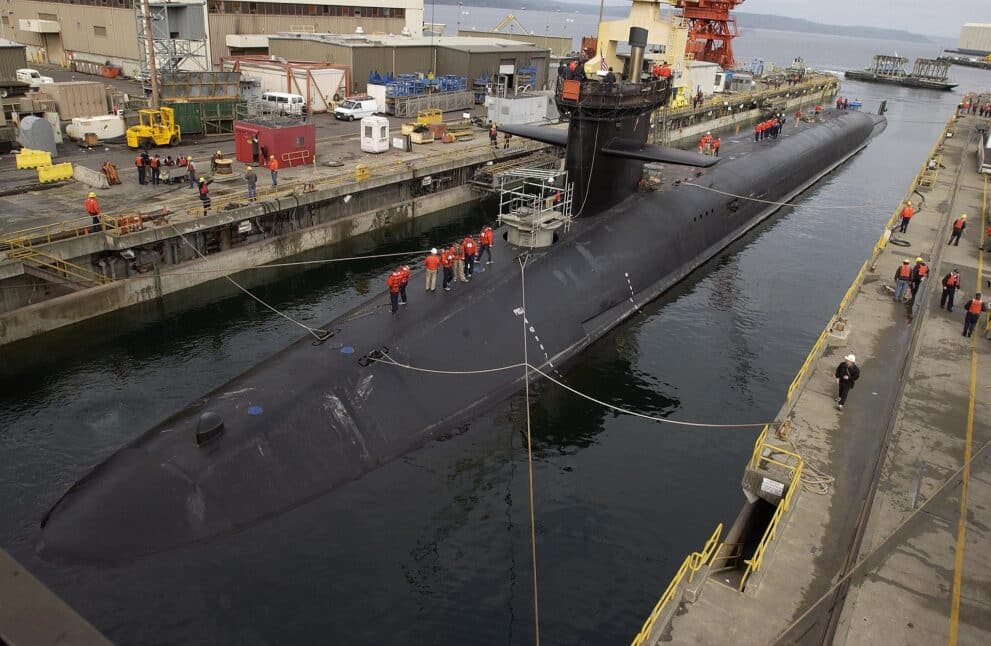
The U.S. Navy operates different classes of submarines, including ballistic missile submarines (SSBNs), guided-missile submarines (SSGNs), and attack submarines (SSNs). The exact number of submarines may have changed since my last update.
As of September 2021, the U.S. Navy had around 67 submarines in active service. This number included 14 Ohio-class SSBNs, 4 Ohio-class SSGNs, and a mix of Los Angeles-class, Virginia-class, and Seawolf-class SSNs. It’s important to note that the U.S. Navy’s submarine fleet is subject to ongoing changes and modernization efforts, so the current number may be slightly different. For the most up-to-date and accurate information, I recommend checking with official sources or the U.S. Navy directly.
- Ohio-class (SSBN): These submarines are designed for carrying and launching ballistic missiles. They are armed with Trident II D5 nuclear missiles. The U.S. Navy had 14 Ohio-class submarines in service at that time.
- Ohio-class (SSGN): Four of the Ohio-class submarines were converted from SSBNs to SSGNs. These submarines were modified to carry Tomahawk cruise missiles in addition to their ballistic missile capabilities.
- Los Angeles-class (SSN): The Los Angeles-class is a class of nuclear-powered fast attack submarines primarily designed for anti-submarine warfare and anti-surface ship warfare. The U.S. Navy had a number of Los Angeles-class submarines in active service, although the exact count may have varied by 2021.
- Virginia-class (SSN): The Virginia-class is a newer class of nuclear-powered fast attack submarines designed to replace the aging Los Angeles-class. These submarines feature advanced technologies and capabilities. The U.S. Navy had several Virginia-class submarines in service as of September 2021.
- Seawolf-class (SSN): The Seawolf-class submarines are a class of nuclear-powered fast attack submarines characterized by their advanced stealth capabilities. While only three Seawolf-class submarines were built, the U.S. Navy may have had them in service during my knowledge cutoff.
Please note that this breakdown is based on the information available up until September 2021, and the numbers and classifications may have changed since then due to retirements, new construction, or other updates in the U.S. Navy’s submarine fleet.
After the U.S., who has the most submarines?
several countries possess significant submarine fleets after the United States. While the specific numbers may have changed, some of the countries with notable submarine capabilities include:
- Russia: Russia has one of the largest submarine fleets in the world. They operate a diverse range of submarines, including ballistic missile submarines (SSBNs), cruise missile submarines (SSGNs), and attack submarines (SSNs). Russia’s submarine force is a key component of its strategic deterrence and naval capabilities.
- China: China has been actively expanding its submarine fleet in recent years. They operate both nuclear-powered and conventionally-powered submarines, including ballistic missile submarines (SSBNs), cruise missile submarines (SSGNs), and attack submarines (SSNs). China’s submarine program is aimed at enhancing its maritime defense capabilities and regional influence.
- North Korea: While North Korea’s submarine fleet is relatively small compared to major naval powers, it has been developing its submarine capabilities. North Korea operates both diesel-electric and midget submarines, which are primarily focused on coastal defense and potential asymmetric warfare strategies.
- India: India has been steadily developing its submarine fleet. They operate both nuclear-powered and conventionally-powered submarines, including ballistic missile submarines (SSBNs) and attack submarines (SSNs). India’s submarine program is focused on strengthening its maritime security and power projection capabilities.
- United Kingdom: The United Kingdom maintains a formidable submarine fleet, primarily consisting of nuclear-powered submarines. They operate ballistic missile submarines (SSBNs) armed with Trident missiles, which provide the UK’s strategic nuclear deterrent, as well as attack submarines (SSNs) for anti-submarine and anti-surface warfare.
It’s important to note that submarine capabilities and fleet sizes can change over time due to retirements, new constructions, or geopolitical developments. For the most up-to-date information, it is advisable to refer to official sources or credible defense publications



 Share
Share Tweet
Tweet Share
Share




Comment